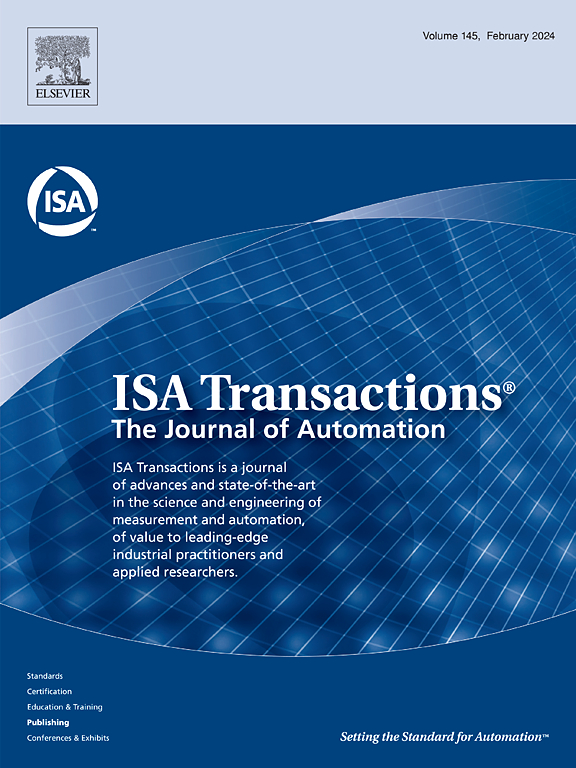Virtual torque control combining with modal decoupling research for hydraulic-driven lower limb exoskeleton robot
IF 6.3
2区 计算机科学
Q1 AUTOMATION & CONTROL SYSTEMS
引用次数: 0
Abstract
The hydraulic-driven lower limb exoskeleton robot (HDLLER) can provide excellent assistance during human walking. However, complex torque coupling disturbances exist between each joint, negatively impacting the precise torque tracking of each joint channel of the robot. To address the coupling force disturbances between HDLLER joints and the human–robot interactions, this paper proposes a virtual torque control (VTC) strategy based on modal decoupling. Specifically, a human–robot coupled dynamic model of the HDLLER considering human motion disturbances is first established. Then, based on vibration theory, a modal space decoupling approach is proposed to transform the system’s mass and stiffness matrices into diagonal matrices, creating two independent control channels. Furthermore, a VTC strategy is introduced to compensate for disturbances caused by human motion and the residual terms after modal decoupling, thereby enhancing the HDLLER’s performance. Finally, to handle parameter variations during modal decoupling and inaccuracies in model identification, the theory is introduced to optimize the proposed VTC, effectively reducing the control strategy’s dependence on model accuracy and improving system robustness. The effectiveness of the proposed method is verified through a series of comparative experiments.
液压驱动下肢外骨骼机器人虚拟转矩控制与模态解耦研究。
液压驱动的下肢外骨骼机器人(HDLLER)可以为人类行走提供良好的辅助。然而,各关节之间存在复杂的力矩耦合扰动,对机器人各关节通道的精确力矩跟踪产生不利影响。针对HDLLER关节间的耦合力干扰和人机交互问题,提出了一种基于模态解耦的虚拟转矩控制策略。具体而言,首先建立了考虑人体运动干扰的HDLLER的人-机器人耦合动力学模型。然后,基于振动理论,提出了一种模态空间解耦方法,将系统的质量矩阵和刚度矩阵转换为对角矩阵,形成两个独立的控制通道。此外,引入了VTC策略来补偿人体运动引起的干扰和模态解耦后的剩余项,从而提高了HDLLER的性能。最后,为了处理模态解耦过程中的参数变化和模型辨识中的不准确性,引入H∞理论对所提出的VTC进行优化,有效降低了控制策略对模型精度的依赖,提高了系统的鲁棒性。通过一系列对比实验验证了该方法的有效性。
本文章由计算机程序翻译,如有差异,请以英文原文为准。
求助全文
约1分钟内获得全文
求助全文
来源期刊

ISA transactions
工程技术-工程:综合
CiteScore
11.70
自引率
12.30%
发文量
824
审稿时长
4.4 months
期刊介绍:
ISA Transactions serves as a platform for showcasing advancements in measurement and automation, catering to both industrial practitioners and applied researchers. It covers a wide array of topics within measurement, including sensors, signal processing, data analysis, and fault detection, supported by techniques such as artificial intelligence and communication systems. Automation topics encompass control strategies, modelling, system reliability, and maintenance, alongside optimization and human-machine interaction. The journal targets research and development professionals in control systems, process instrumentation, and automation from academia and industry.
 求助内容:
求助内容: 应助结果提醒方式:
应助结果提醒方式:


